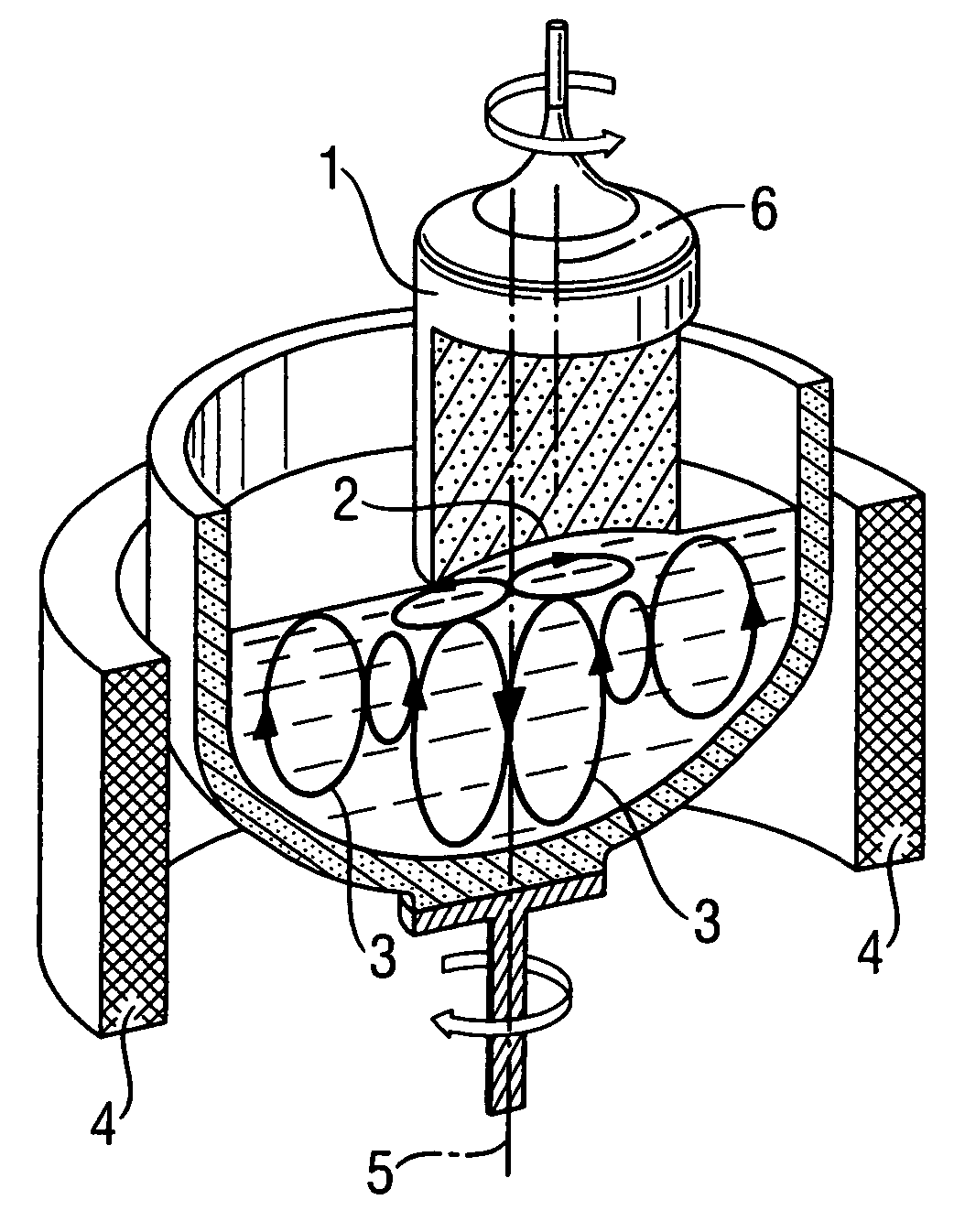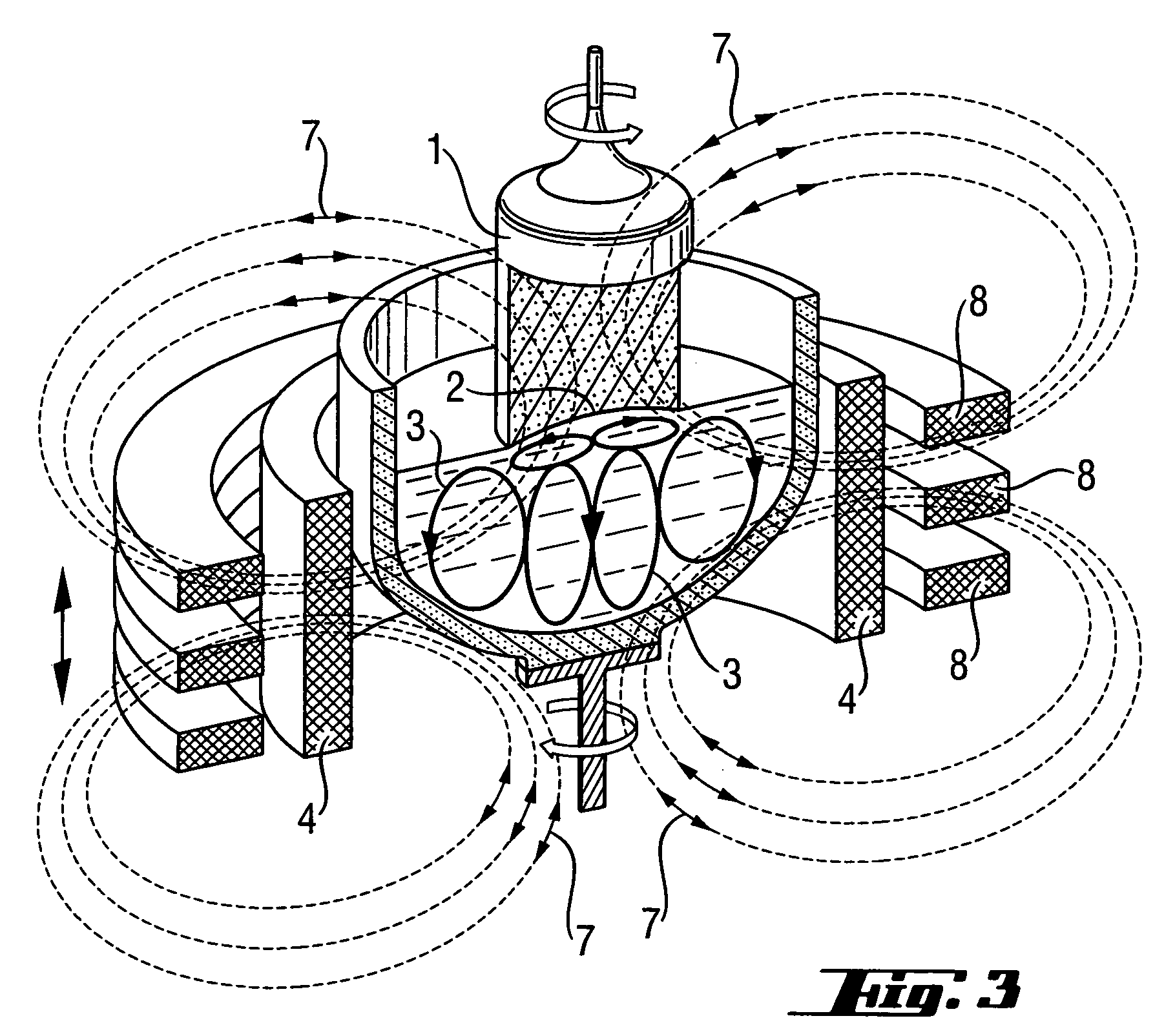Silicon single crystal, and process for producing it
a single crystal, silicon technology, applied in the direction of crystal growth process polycrystalline material growth, etc., can solve the problem of difficult adjustment of heat-transferring melt flow, difficulty in deliberately setting radial crystal properties within the narrowest possible range, and inability to complete the theoretical calculation in advance. problem
- Summary
- Abstract
- Description
- Claims
- Application Information
AI Technical Summary
Benefits of technology
Problems solved by technology
Method used
Image
Examples
examples
[0043]The text which follows uses examples to explain the effect of arrangements according to the invention by comparison with conventional arrangements in more detail.
[0044]FIG. 6 shows an axial longitudinal section through a single crystal which has been pulled under conventional conditions using a rotationally symmetrical traveling magnetic field, corresponding to the arrangement illustrated in FIG. 3. The strongly curved radial profile of the solidification interface 11 can be seen very clearly from lifetime measurements (μPCD) as illustrated in longitudinal section. For comparison purposes, FIG. 7 presents a lifetime measurement which clearly reveals the effect of partially shielding a traveling magnetic field. During production of the crystal, an arrangement with an asymmetric traveling field (ATMF), as diagrammatically illustrated in FIG. 4, was used, with otherwise identical crystal pulling conditions. Compared to FIG. 6, the lifetime measured on a longitudinal section throu...
PUM
| Property | Measurement | Unit |
|---|---|---|
| diameter | aaaaa | aaaaa |
| diameter | aaaaa | aaaaa |
| diameters | aaaaa | aaaaa |
Abstract
Description
Claims
Application Information
 Login to View More
Login to View More - R&D
- Intellectual Property
- Life Sciences
- Materials
- Tech Scout
- Unparalleled Data Quality
- Higher Quality Content
- 60% Fewer Hallucinations
Browse by: Latest US Patents, China's latest patents, Technical Efficacy Thesaurus, Application Domain, Technology Topic, Popular Technical Reports.
© 2025 PatSnap. All rights reserved.Legal|Privacy policy|Modern Slavery Act Transparency Statement|Sitemap|About US| Contact US: help@patsnap.com



